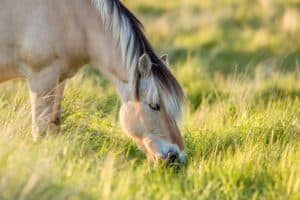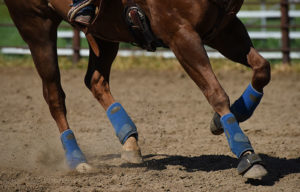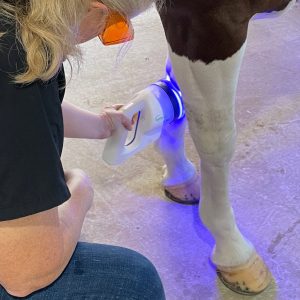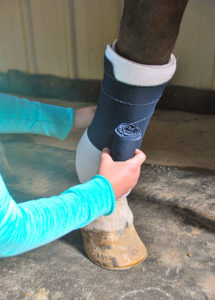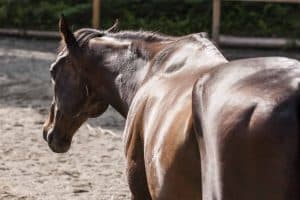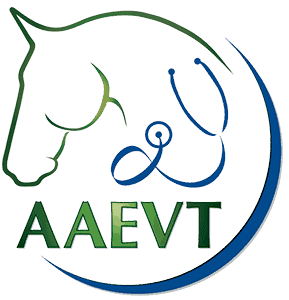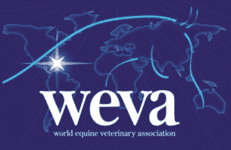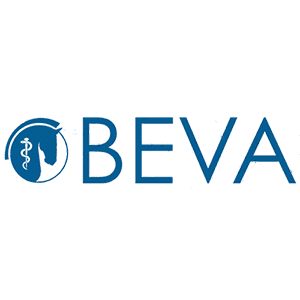Common Pasture Weeds

Buckhorn Plantain
Common name: Buckhorn PlantainScientific name: Plantago lanceolata L.
Life Cycle: Perennial
Poisonous: No
Buckhorn plantain is widespread across North America and is a commonly occurring plant in all types of pastures and rough turf. It readily survives overgrazing and compacted horse pastures, especially when rainfall is limited. Buckhorn plantain is relatively easy to control with several herbicides; however, mowing in pastures is generally ineffective. | Photo: Wikimedia Commons

Bush Honeysuckle
Common name: Bush (Amur) honeysuckleScientific name: Lonicera maackii (Rupr.) Herder
Life Cycle: Perennial
Poisonous: None reported
Bush honeysuckle describes several species of woody honeysuckles found in the eastern United States. All grow rapidly and produce multiple stems and can reach heights of about 30 feet. Large bush honeysuckle plants are difficult to remove by hand due to an extensive root system. Herbicidal control is effective. | Photo: Wikimedia Commons

Buttercup
Common name: ButtercupsScientific name: Ranunculus species
Life Cycle: Perennial
Poisonous: Yes
Buttercup is the common name for several Ranunculus species distributed across much of the United States. Buttercups can be poisonous to horses, but the plants are not palatable and usually not eaten by animals. Mowing is usually ineffective for controlling buttercups, however; they are easily controlled with several herbicides. | Photo: Wikimedia Commons

Chicory
Common name: ChicoryScientific name: Cichorium intybus L.
Life Cycle: Perennial
Poisonous: None reported
Chicory is a commonly occurring plant in all types of pastures and rough turfs across North America. It is relatively easy to control with several herbicides. Mowing in pastures might reduce flower formation but is generally ineffective in killing the plant. Hoeing or digging the taproot is successful and should be done before the seed heads form. | Photo: Wikimedia Commons

Common Milkweed
Common name: Common MilkweedScientific name: Asclepias syriaca L.
Life Cycle: Perennial
Poisonous: Yes
Common milkweed grows throughout North America except in the extreme southern, southwestern, and far western states. It produces cardiac-glycosides that are toxic to horses and might cause depression, irregular heartbeat, diarrhea, weakness, labored breathing, and even death. Plant control is difficult. Hand weeding and removing the deep taproot might help. Mowing is generally ineffective. | Photo: Wikimedia Commons

Common Ragweed
Common name: Common ragweedScientific name: Ambrosia artemisiifolia L.
Life cycle: Warm season annual
Poisonous: No
Common ragweed is distributed widely across the United States and occurs in pastures and cultivated crops. Infestations in pastures are usually more of a problem during periods of drought or when overgrazing occurs. Common ragweed control is relatively easy: apply herbicides to plants less than 12 inches tall that have not been mowed. | Photo: Wikimedia Commons

Hemp Dogbane
Common name: Hemp dogbaneScientific name: Apocynum cannabinum L.
Life cycle: Perennial
Poisonous: Yes
Hemp dogbane grows throughout North America. It's poisonous to horses, with the leaves toxic at all times, including dried in hay. The toxic substance is a glycoside that can cause digestive disturbances, diarrhea, and weakness. Controlling it in pastures is difficult. Mowing is often ineffective and herbicidal treatment requires multiple applications. | Photo: Wikimedia Commons

Nimblewill
Common name: NimblewillScientific name: Muhlenbergia schreberi J. F. Gmel.
Life Cycle: Perennial
Poisonous: No
Nimblewill is a warm season perennial grass that is widespread across the eastern United States. A commonly occurring plant in many pastures and turf types, it is found especially in Kentucky bluegrass fields. Mowing is ineffective to control it. Currently no herbicide is available that will control the nimblewill and not cause severe damage to desirable pasture grasses. | Photo: Wikimedia Commons

Poison Hemlock
Common name: Poison HemlockScientific name: Conium maculatum L.
Life Cycle: Biennial
Poisonous: Extremely
Poison hemlock is distributed across the United States and grows most frequently along fence borders in shady and moist areas. This plant is extremely poisonous to horses and humans. All plant parts contain the poisonous alkaloids; however, the fruits contain the greatest concentration of the alkaloids. Poison hemlock control is relatively easy with herbicides. | Photo: Wikimedia Commons

Spiny Pigweed/Amaranth
Common name: Spiny pigweed, Spiny amaranthScientific name: Amaranthus spinosus L.
Life Cycle: Warm season annual
Poisonous: No
Spiny pigweed is distributed widely across the United States and grows most frequently along fence borders, feeding/watering areas, and other compacted areas. Control is relatively easy with herbicides applied to plants less than 12 inches tall. Mowing and hand weeding are effective if done before flower production to prevent seed formation. | Photo: Wikimedia Commons

Star-of-Bethlehem
Common name: Star-of-BethlehemScientific name: Ornithogalum umbellatum L.
Life Cycle: Perennial
Poisonous: Yes, all parts, especially bulbs and flowers
Star-of-Bethlehem grows in the eastern half of the United States and the Pacific Northwest. It grows in pastures, landscape beds, gardens, fields, and roadsides. The plant contains cardiotoxins and glycosides that are toxic to horses; the bulbs and flowers contain the highest amounts. Few pasture herbicides are effective on mature plants. Remove small patches by hand, digging the bulbs. | Photo: Wikimedia Commons

Tall Ironweed
Common name: Tall ironweedScientific name: Vernonia gigantea (Walt.) Trel.
Life Cycle: Warm season perennial
Poisonous: No
Tall ironweed is distributed widely across the eastern half of the United States and is found most frequently in low damp areas of pastures and roadsides. Tall ironweed control is possible when herbicides are applied to plants less than 12-15 inches tall that have not been mowed. Mowing is an effective treatment to prevent seed production. | Photo: Wikimedia Commons

White Snakeroot
Common name: White SnakerootScientific name: Eupatorium rugosum Houtt.
Life Cycle: Perennial
Poisonous: Yes
White snakeroot is a warm-season perennial frequently found in shaded areas of pastures near streams or woods. These plants are toxic to horses; both fresh and dried leaves contain the toxin. Cumulative intake between 1 and 10% of body weight is toxic and can be lethal. Removing these plants from the pasture by hand is often the best course of action. | Photo: Wikimedia Commons

Wild Carrot
Common name: Wild Carrot (Queen Anne’s Lace)Scientific name: Daucus carota L.
Life Cycle: Biennial
Poisonous: Slightly
Wild carrot, also known as Queen Anne's lace, is an erect biennial that can grow to about 4 feet in height. It is found in pastures, native areas, fields, and roadsides. Mild neurotoxicity to horses was reported in Europe but is not considered a serious threat in North America. Controlling wild carrot in pastures is easy using timely mowing before flowering and herbicidal treatment. | Photo: Wikimedia Commons
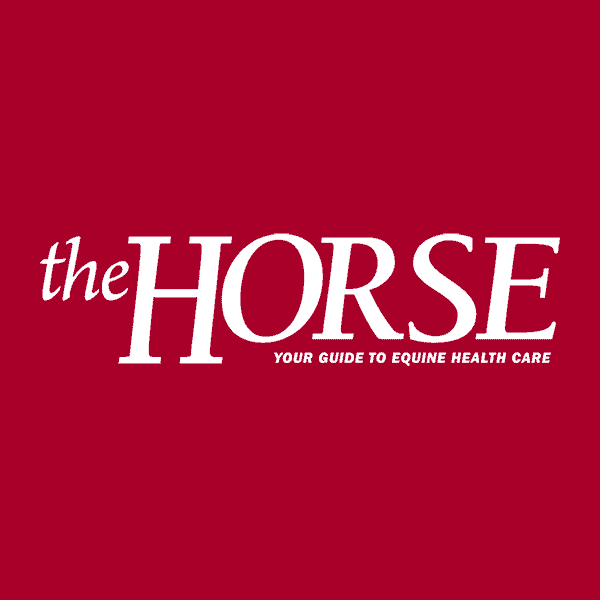
Written by:
The Horse Staff
Related Articles
Stay on top of the most recent Horse Health news with



